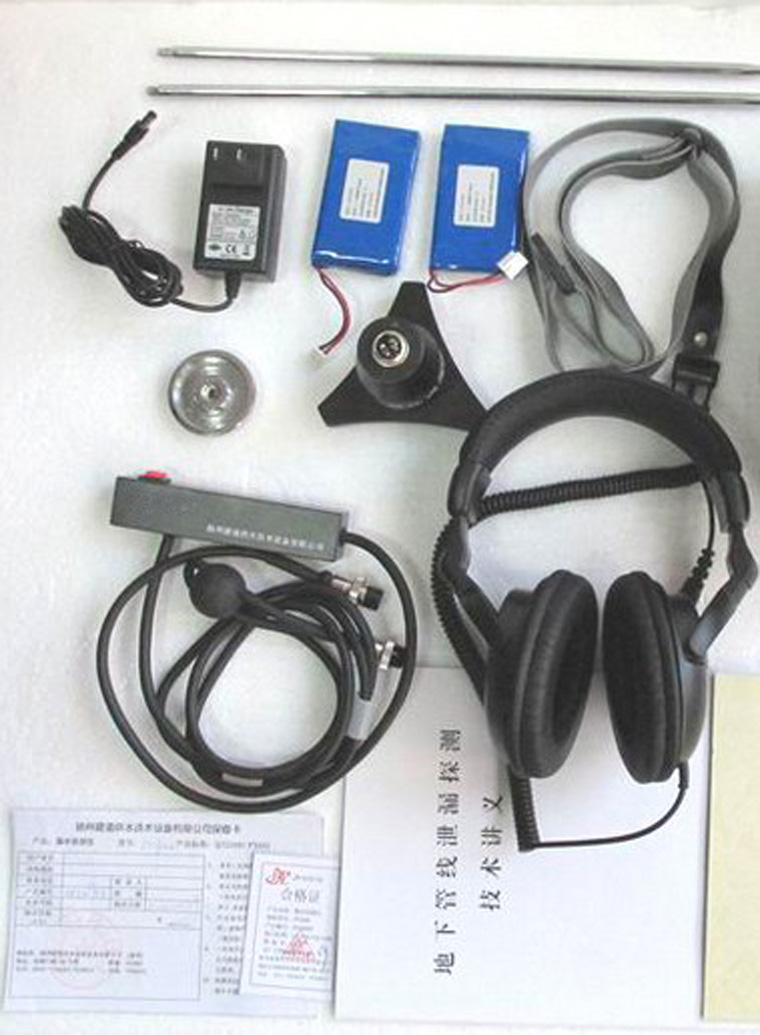Ultrasonic is a kind of sound wave that is beyond the hearing range of the human ear (greater than 20 kHz). In order to be able to detect such sound waves, we must use a sound wave that can capture the ultrasonic frequency and can convert the sound waves that can be heard by the adult ear. Instrument. The Ultrasonic Leak Detector (SDT270) R&D and manufacturing center is located in Brussels, the capital of Belgium in northwestern Europe. The core business area is the measurement system for high-tech leak detection, air tightness testing and predictive maintenance for industrial maintenance and quality control.
Ultrasonic Leak Detector working principle:
The ultrasonic leak detector is a kind of ultrasonic signal generated by detecting a partial discharge, and frequency conversion is performed, and the ultrasonic signal is converted into a sound that can be heard by the human ear and a displayed value, thereby finding a partial discharge point and eliminating a hidden danger. The characteristics of different types of partial discharge sounds are different, so it is possible to judge which partial discharge failure is caused by the difference in sound. The intensity of the partial discharge can be quantified by the magnitude of the value. Ultrasonic waves have directionality and can be positioned for local discharge points.

Steps Of Ultrasonic Leak Detector:
Step 1: Run and store ultrasonic measurements
1. Press the F3 key to enter the measurement setup menu. Use the up and down arrows to adjust the acquisition time.
2. The acquisition time is set to 0s, then RMS, maximum RMS, peak and crest factor are refreshed every 250ms. This mode collects data on the fly.
3. When the acquisition time is set above 1s, the RMS, peak and crest factor will be calculated over the entire data acquisition time, and the maximum RMS is the maximum value during the entire acquisition time. Each sub-RMS is calculated within 250ms with a maximum acquisition time of 10s.
4. Use the F1 key to save the settings as a preferred setting. F2 key loading related preferred configuration settings. Use the F3 key to return to the measurement interface with the modified settings.
5. Get data Press the M key. Fixed RMS and maximum RMS values ,when the acquisition time is set to 0s.
6. Click F3 or Save button to save the data.
Use the up and down keys to select the desired memory location and press the Enter key. The ultrasonic leak detector will automatically save the data in the corresponding sensor type memory.
Step 2: Run and store temperature measurements
1. Press the F1 key to select the temperature measurement T, the F2 key activates or deactivates the laser pointer, and presses the F3 key to enter the measurement setup menu.
2. Adjust the emission coefficient (0.01-1) to switch between Celsius and Kelvin physical units.
3. Use the up and down keys to select the amount to be switched. Use the left and right keys to switch. The F1 key saves the setting as the preferred setting, the F2 key loads the relevant preferred configuration settings, and the F3 key returns to the measurement interface using the modified settings. The storage method is the same as the ultrasonic measurement. F1 cancels the measurement storage.
Step 3: Review the stored measurement data
1 Click the Enter button to go from the measurement screen to the main menu;
2 Click the left and right button to select;
3 Click the Enter key to enter the + sign to indicate that the path has been stored, use the up and down keys to select the path, and right click to expand the memory location;
4 Click the up and down keys to select the desired sensor and right click to display the saved measurement data. Enter key to open the data;
5 Click the F1 button to return and press to return to the measurement page multiple times.